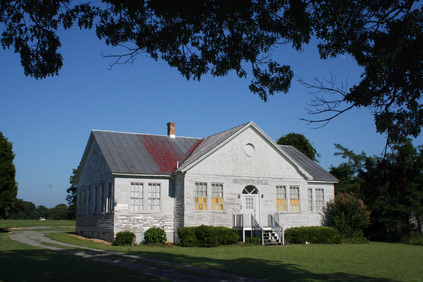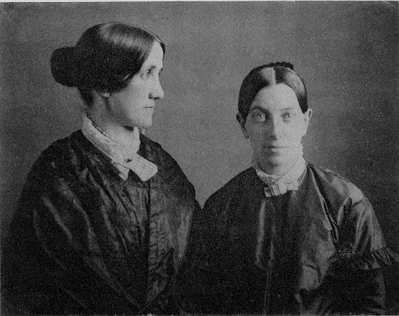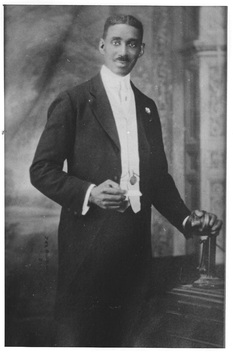Door sign, Holley Graded School historic site. Photo by Margaret M. Cook, July 2011.
History of Holley SchoolCourtesy of the Massachusetts Historical Society
|
The Holley Graded School Historic Site preserves an icon of black education on Virginia's Northern Neck; the school was established for the purpose of teaching African Americans emancipated at the end of the Civil War. Glasgow Blackwell and other blacks of the Lottsburg area, affiliated with the neighboring Zion Baptist Church, called the first teacher, Caroline Putnam, in 1868. Putnam, who had traveled with Sallie Holley on the abolitionist speaker circuit after their days together at Oberlin College, determined to make the teaching of Lottsburg's freedpeople and their children her life's work. Seeking to establish a more permanent site where she might have more autonomy, Putnam solicited Holley's help; when Holley purchased the property in 1869, Putnam named the school for her in appreciation. The building which now stands, built in stages from 1922-1933, is situated on that land. Holley and Putnam spent the remainder of their lives in this professional endeavor. Holley died in 1893; Putnam, the younger partner , lived until 1917, stipulating in her will that the property be deeded to a board of trustees comprised of local blacks for the continued purpose of black education. |
From Private to Public
|
The school remained in operation as a private, often integrated institution until Putnam's death. The property was then deeded to an all-black board of trustees headed by Robert J. Diggs, who continued the school's educational legacy. In that first year following Putnam's death, Holley School became a public institution; the land was "leased" to the Northumberland County School Board, but Diggs and the other board members retained the deed and took responsibility for the continued operation of the school now, by law, segregated. In the 1920s the black community of Lottsburg, having outgrown the original structure, raised money and provided the labor to begin building in stages the four-room schoolhouse that now stands, beginning in 1922. The cornerstone bears the date from the year the land was purchased, 1869, as well as the year 1933, when construction of the final fourth room was completed.
The Holley Graded School continued in operation for decades, fostering learning and discipline in its students. Many of the girls and boys who were educated there later became teachers at the school, continuing the legacy of academic achievement. When the Northumberland school district, seeking to justify the idea of "separate but equal" facilities in response to the Brown v. Board of Education decision, opened a new black elementary school in 1959, the Holley Graded School ceased to be an elementary school, but continued in its role as a site of black education. |
Photo from the Collection of Emma Diggs Carter
|
Holley School Today

Photo by Margaret M. Cook, July 2011
In the years that followed, Holley School continued as a center of adult learning. Many in the community joined forces to establish the Holley Graded School as an historic site. They raised money and received a matching grant for restoration. The building was placed on the list of National Register of Historic Places and was designated a Virginia Historic Landmark and National Historic Site. These days, Holley School continues to have an educational role in the community, as its continued presence serves to remind and educate passersby of a history not so long past. The current board of trustees continues the work of preserving the school and its history and legacy and has established a restored classroom as a record of what black education was like here under segregation. The schoolhouse also continues as a center for black culture, as other rooms at the school are used for a wide variety of community gatherings. You are invited to join the board and school alumni in preserving this important icon of American history. For information about upcoming events open to the public, to make arrangements to tour the site , or to contribute your time or talents, see our News and Contact Us pages on this Website. To learn more about Holley School and its history, see the Holley School Histories website at http://www.holleyschoolhistories.weebly.com.


